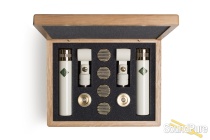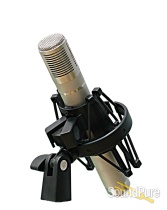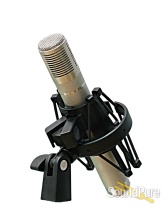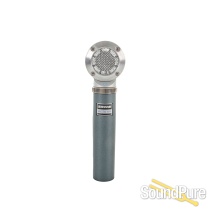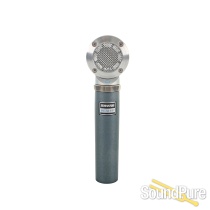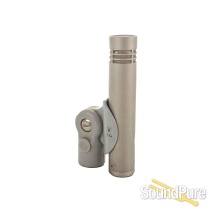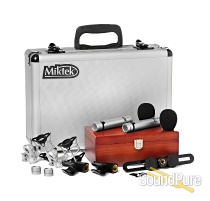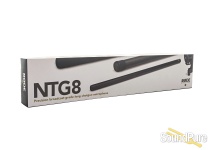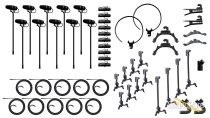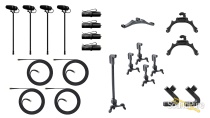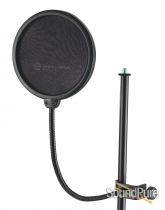-
Call Us Toll Free888-528-9703
-
Local/International (+1)919-682-5552
- Call Us! Toll Free! 888-528-9703
- Local / International (+1) 919-682-5552

What We Think
All capsules are available in matched pairs with official Schoeps documentation. For matched pairs multiply the cost of the microphone exactly by two and then add $40 dollars for the matching fee! The amplifier bodies are available in sequentially serial numbered pairs at no additional charge. Any Schoeps product not found on our webpage can be purchased through Sound Pure. Please call and talk to one of our staff members to inquire about the price and availability!
Manufacturer's Description from Schoeps
Boundary-layer recording offers unobtrusive microphone placement possibilities; no stands or hanging fixtures are required.
When pressure transducers are used, the result is a hemispherical directional characteristic that is independent of frequency; thus it is not necessary to aim the microphones, and if the angle of sound pickup changes, the sound quality remains essentially the same.
The Microphone capsule (pressure transducer) is designed for placement at an acoustic boundary layer with a highly uniform hemispheric directional pattern; when the pickup angle changes, the sound "color" does not change.
The BLM 3g provides excellent reproduction of low frequencies; Boundary-layer recording is a well-known technique by now, offering unobtrusive microphone placement possibilities (no stands or hanging fixtures required, and it is not necessary to aim the microphone) and a directional characteristic that is independent of frequency. It is based on an effect in physics by which sound pressure doubles along a sound-reflecting surface. If a transducer is placed upon (or within) a large, sound-reflecting surface, its output voltage will be twice that of an equivalent transducer in a free sound field. In theory an ideal transducer of this type would have a membrane of infinitesimally small size, and would be mounted flush with an infinitely large, perfectly sound-reflecting surface. In practice, the plate in which the small transducer of the BLM 3g is mounted assures reflection of only the high and medium frequencies. To reflect sound at lower frequencies (greater wavelengths), the dimensions of the surface must be correspondingly larger. So the microphone should be placed on a floor, wall or ceiling, or mounted on another surface large enough to reflect the lowest frequencies of interest. Since the plate of the BLM 3g is only 5 mm thick and the transducer is not mounted at its center, the edges of the plate have very little effect upon the sound pickup.
The BLM 3g does not interfere with the natural sound field; off-axis sounds thus encounter very little frequency discrimination. Sound coloration is low, even for moving sound sources, because the frequency response is essentially the same for all angles within the hemispherical pickup pattern. Microphones used near sound-reflecting surfaces ordinarily produce comb-filter effects. This does not occur with the BLM 3g, since at the boundary in which the transducer is mounted there can be no phase difference between the direct sound and its reflection.
Ordinary pressure transducers show a difference in sensitivity between direct and diffuse sound at high frequencies. In a properly-placed boundary-layer microphone, however, this difference occurs at all frequencies. The sound pressure for direct sound is doubled at an acoustic boundary (6 dB increase), while the essentially random phase relationships of reflections in the diffuse sound field cause the boundary-layer microphone's sensitivity to increase by only 3 dB. Thus a boundary-layer microphone will suppress diffuse sound somewhat, even though it is not directional. It will pick up less "room sound" and the recording will be slightly "drier" than it would be with an omnidirectional microphone.
The capsule itself is a classic electrostatic pressure transducer, which assures accurate reproduction of even the lowest frequencies along with the high signal-to-noise ratio and stable performance typical of professional condenser microphones. This type of transducer is inherently insensitive to wind and vibration and the BLM 3g is comparatively heavy, so it picks up very little solid-borne noise. For example, when footsteps are recorded, most of the sound reaching the microphone will be conducted through the air rather than the floor. Typical applications include pickup of stage dialogue, or in orchestra pits, as an ambience microphone and for special public address applications. Its miniaturized version (BLM 03 Cg) is often used on conference tables and speakers' podiums. Since the microphone may well be used on the floor, the likelihood of damage from its being stepped on has been reduced by careful design and construction. As a rule, the capsule will not be harmed by normal footwear.
The BLM 3g (boundary-layer microphone capsule) resembles any other microphone capsule (MK) of the Colette Series in that it needs a microphone amplifier (CMC) to form a complete microphone. This arrangement allows the attenuator (DZC) and Active Accessories such as the variable low-cut filter (CUT 1 or CUT 2) or the Active Cable (KC) to be added as well. Dimensions: plate: 200 mm 200 mm 5 mm Height of the microphone-amplifier connector: 21 mm Weight: 570 g (without microphone amplifier) This double clamp can be used when making M/S recordings with a BLM 3g. Its larger side holds the CMC microphone amplifier or capsule connector of the KC Active Cable, screwed onto the BLM 3g. The smaller side either holds an Active Cable with an MK 8 capsule or a CCM 8 U Compact Microphone, which should be placed over the sound inlet of the BLM 3g. The engraved 8 on the end of the MK 8 or CCM 8 U should lie parallel to the plate of the BLM 3g, and the red dot should point to the left when viewed from behind the microphones. The great advantage of M/S technique is the ability to make adjustments during post-production. The "M" and "S" channels can be recorded directly, and matrixed into stereo left and right signals in playback. The apparent width of the stereo image can then be set appropriately for the given situation.
Features:
- Microphone capsule (pressure transducer) designed for placement at an acoustic boundary layer
- Highly uniform hemispheric directional pattern independent of frequency
- Excellent reproduction of low frequencies
- Often preferred for orchestral recording
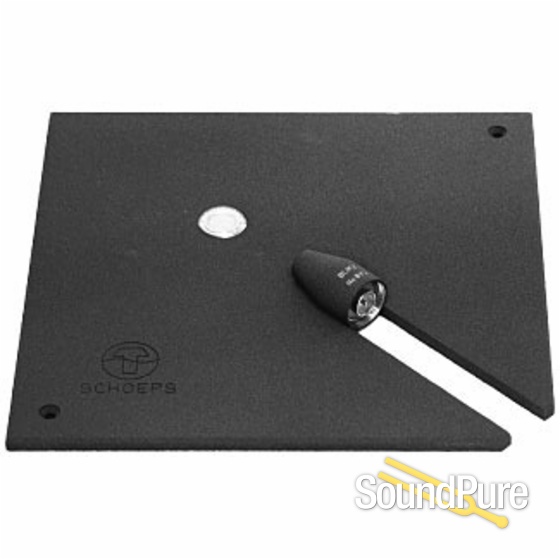
About Manufacturer
The focus on high quality, reliability and neutral accurate sound has been the production philosophy of Schoeps Microphones since 1948. The simple elegance and clever engineering of their products boast a true passion for the art of microphone making and a tireless attention to detail. The Colette System is the largest modular mic system available offering twenty different capsules and various active accessories. The newest addition to the acclaimed Colette System is the CMC 6 xt which offers extended frequency response beyond 40 kHz. The CCM Series mics are the smallest phantom powered non-electret microphones in the world. Other notables from Schoeps include the M222 Tube microphone, the VMS 5U portable two channel mic preamp and M/S matrix, three extremely unique stereo mics, the KFM-360 Surround microphone and the Polarflex Microphone System that allows the user to emulate the characteristics of any microphone. Schoeps is unquestionably among the most innovative microphone manufacturers in the world, leading the way in many developments. Central to its design philosophy over the years is the company's insistence on absolute sound neutrality of the microphones. It is really no wonder that Schoeps has so many supporters, not only in the area of classical music recording and reinforcement, but also in film and television. No doubt part of its success is due to the fact that, in a space of only 1500 square meters, a total of 35 employees develop, manufacture and distribute the whole range of Schoeps products. Staff turnover is very small, which says much about the family atmosphere in the company. Many an employee has celebrated his or her 25th anniversary with Schoeps. Continuity is and will remain very important at Schoeps. Despite many outside offers, Ulrich Schoeps intends to continue the life's work of his father.
Specifications
- Frequency range: 20 Hz - 20 kHz
- Sensitivity: 19 mV/Pa
- Equivalent noise level: A-weighted: 12 dB-A
- CCIR: 23 dB
- Signal-to-noise ratio (A-weighted): 82 dB-A
- Maximum SPL (0.5% THD): 128 dB



